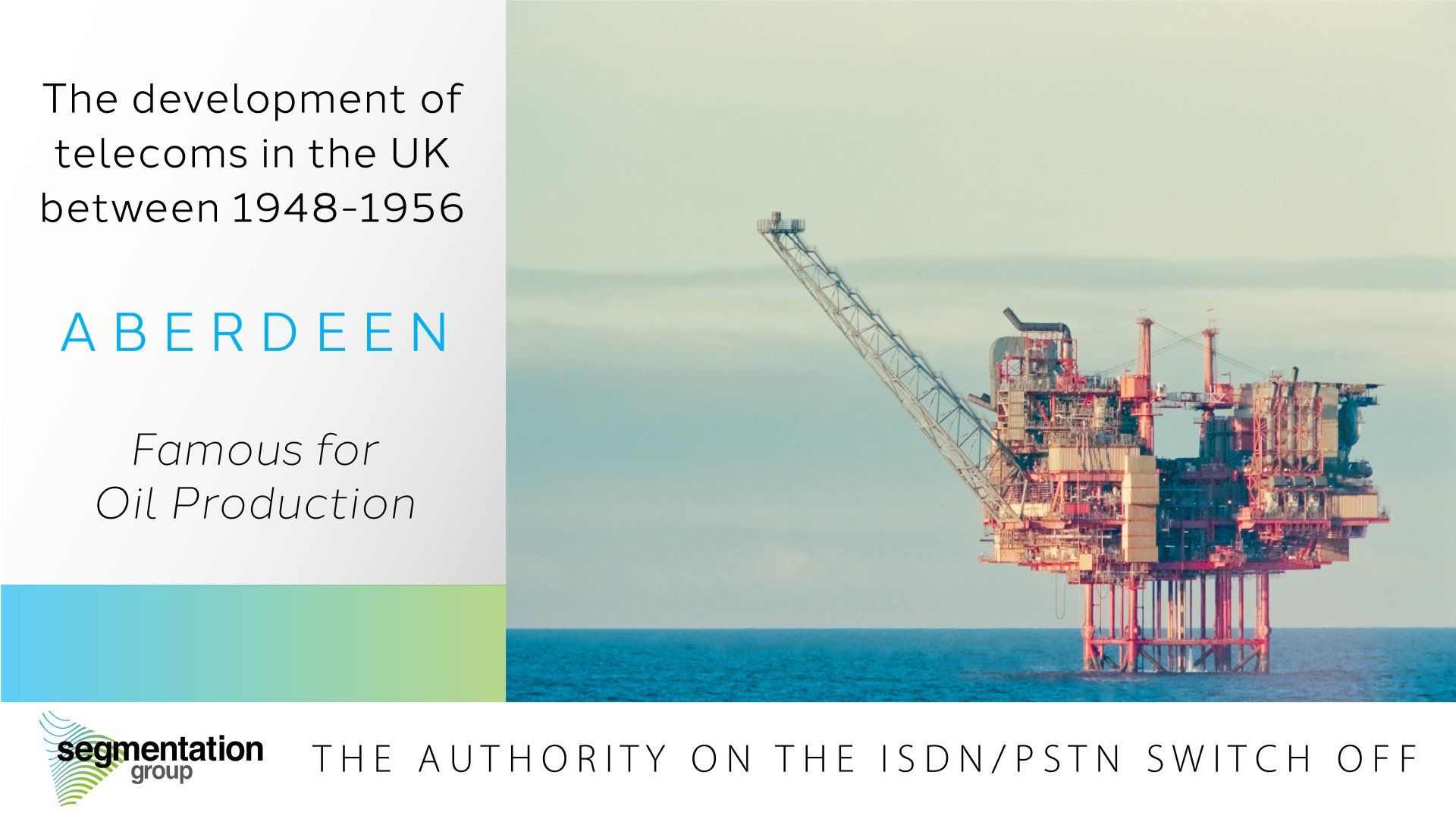The Development of Telecoms - Aberdeen

From the pleasant greenness of Deeside to the rugged grandeur of the Highlands, from the fertile farms on the Moray Firth coast to the rough grazing of the Islands, this extensive area of 14,000 square miles covers a territory steeped in Scottish history. The area serves nine northern counties as well as the Islands of Skye, Lewis and Harris and the Orkney and Shetland Islands.
The most northerly subscriber in Great Britain is Muckle Flugga lighthouse in the Shetland Islands. Aberdeen, known as the Granite City, contains many fine buildings including the university, one of the oldest in Europe. The port, well-known for the trawling industry, was in use hundreds of years ago. As a seaside resort and tourist centre, Aberdeen provides for many thousands of holidaymakers each year. Inverness, a fine town at the mouth of the River Ness, is the second largest in the area. Historically, it has claim to be called "The Capital of the Highlands". In the beautiful scenery of the glens, mighty dams are now being built which will turn the waters of the lochs into electricity. These hydro-electric schemes and the economic revival of the Highlands are making big demands for telephone facilities in remote places.
Probably no telephone area in Great Britain is more varied. The area contains the smallest exchange, Shieldaig, with two exchange connections and the largest exchange in Scotland, Aberdeen Main with 9,600 exchange connections. Besides submarine cables to the Islands there are inland submarine cables – across the lochs. Some exchanges and rural call offices are connected to the telephone system by radio. Much of the area is sparsely populated. A quarter of a million poles are needed for the long overhead routes serving 391 exchanges and providing service to the 45,000 exchange connections and 68,000 stations. The telephone staff in the area, including operators is 1,950 and the annual revenue is £1,500,000.











